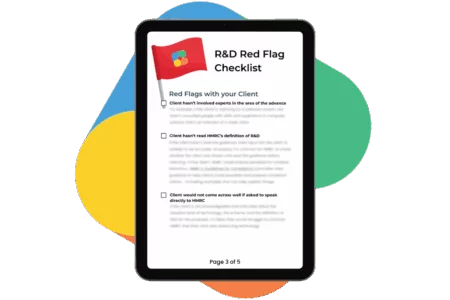Aside from HMRC’s random sampling exercise, which was mentioned in evidence given to a House of Lords Subcommittee in November 2022, we suspect that most compliance checks are triggered by something in the claim itself. Mistakes are easy to make when working in such complex territory, so we’ve highlighted a few of the most common to help you spot and fix them before you submit the claim to HMRC.
Overly long reports
We’ve heard anecdotally that HMRC case workers only have 30 minutes or so to review a claim and decide whether it needs further attention. Any reports which can’t be read in that time are likely to be flagged as riskier. So, it’s best to keep your report clear and concise. Cover the essential facts and avoid adding extra information just to make the project look impressive.
Try also to avoid using too many words. If every paragraph is one long, rambling sentence, with lots of clauses, which meander around and confuse more than they clarify, so that the reader has forgotten the beginning of the sentence before they’ve reached the end, like you probably have here, then it’s going to be much harder to decipher what you mean. And if HMRC can’t easily ‘see’ what the advance is, that makes an enquiry much more likely!
‘Red flag’ words and exaggerated language
Sometimes the words you want to use have a slightly different meaning to HMRC. “Bespoke,” “custom”, and “unique” all imply that the work was specific to a particular client but give no indication about whether a technological improvement was made. Rather than get into that conversation with HMRC, it’s usually safer to leave them out.
Also, avoid the temptation to go overboard when describing the technological advance. Exaggerated language can have the opposite impact to what you intend and damage the reader’s confidence in your claim. Was the product really designed to withstand “extreme temperatures and weather conditions,” or is that over-egging the pudding? Using more balanced language may not be as fun or dramatic, but it’s likely to be more credible to the person reviewing the claim.
No ‘Competent Professionals’
This is one to check before you start PREPARING a claim, rather than right before you submit! HMRC expect Competent Professionals (CPs) to be involved in a project for them to consider it R&D. These are experts in the area of technology in which the advance is being claimed. For example, if it’s a software project for a chemical company, the chemists wouldn’t normally be accepted as competent professionals in software.
While a company doesn’t necessarily have to employ the Competent Professionals, it’s usually safer when they do. For example, a company employing a team of software engineers and computer scientists is going to have access to a lot more knowledge and expertise in software than if they were relying on the opinion of a single, external subcontractor.
However, as long as Competent Professionals are involved, the claim may be valid. As the advisor, considering where the CPs are employed, and how many of them are, may help you to evaluate how risky the claim is.
Unrealistic, overstated, or inaccurate staff apportionments
Be cautious with 100% apportionments, especially for directors. Even in an SME which has exclusively worked on R&D projects and nothing else, it’s very likely that staff will have spent time on non-qualifying activities, like meeting customers, writing marketing copy, and other tasks associated with running the business.
When you do apportion staff time, it’s a good idea to do so individually, and to include their job title. This makes it easier for HMRC to see what staff costs have been included in the claim. On the other hand, if you make a blanket apportionment across the entire team, it will look to HMRC like you haven’t considered it carefully. It’s best practice for apportionments to come from the client directly, and you can help facilitate this by asking for details of how everyone spent their time.
If this has triggered your appetite for reducing the risks in your R&D claims, download our free Red Flag Checklist. Sharing this with your team will help to raise awareness about how HMRC selects R&D claims for enquiry – and may help you avoid making the most common mistakes when preparing R&D claims.





